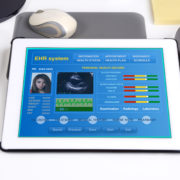How to Get the Most out of Your Orthopedic EHR System
With a mere 34 percent of physicians reporting that they were satisfied or very satisfied with their EHR system in a 2015 AMA survey, optimization of EHR systems is a popular topic these days. But what changes should you make to get everything you need from your EHR system? Here’s a quick look at some popular options you may want to consider when making changes to your system.
Maximizing the System
With the number of changes that have come into healthcare over the past few years, it’s easy to get caught in the habit of implementing the fewest possible changes into your practice. Unfortunately, when it comes to a good EHR system, you’re selling your practice’s potential short. The AMA study referenced above also noted that most physicians spend an hour or two every day simply catching up and keeping up with paperwork. What if you could reduce that time to an absolute minimum? What improvements could you make to patient care by freeing up that time every day?
Digitization is leading the way to make that dream a reality. When you optimize your orthopedic EHR system, you’re making it more efficient while streamlining your office’s workflow. But how do you start the process of optimizing your EHR system? Here’s a quick plan of action to consider as you move forward:
- After your EHR system has become well established and your staff is familiar with how it works, ask for feedback on areas where the system could be improved. Take the time to determine whether any feedback is a genuine need for change or if it represents an area where more training or information is needed rather than changes to the system.
- Start looking into your system to see whether it can be adapted to meet genuine needs for system changes needs by simply changing the configuration or if the changes will require outside help from your software vendor. Today’s systems are much more open to customization and collaboration than in the past, making it much easier to make the necessary changes.
- Start small by only implementing the changes in one part of your practice at a time. This gives you the opportunity to see whether it works as needed or if it will take additional finetuning to get the right results. By limiting the implementation, you’ll still have the original system to fall back on if the change doesn’t work out as well as you’d think.
- Move into full implementation of the changes, keeping a close eye on reactions, issues and drawbacks as you spread the new options to the rest of your practice. Take the time to meet with staff to determine whether they’re running into issues that you may not have noticed depending on where you’re doing most of your work in the interface.
By taking the time to optimize your EHR system, you can ensure that your practice will be able to run at peak efficiency while allowing you to focus on the most important part of your practice: your patients. But what if you’re not sure what changes need to be made to reach the best possible efficiency?
At Exscribe, we have a wide range of comprehensive solutions to optimize your EHR system and can help you find the perfect solution for your practice. Please feel free to contact us today to request a demo of our comprehensive suite of digital orthopedic products, with any questions or to start moving your practice into a promising new future.











